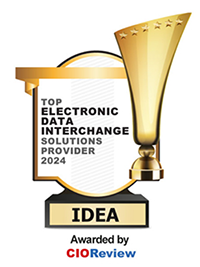Five Foundational EDI Transactions in IDEA Exchange to Maximize ROI
Week #2 of IDEA’s EDI Masterclass: Your Ultimate Guide to Streamlining Business Processes with Electronic Data Interchange
By Tom Guzik, Director, Digital Integration Services, IDEA

Electronic Data Interchange (EDI) automates data exchanges between trading partners, minimizing manual processes, reducing errors, and expediting transactions. As a central hub for EDI transactions in the electrical industry, IDEA Exchange facilitates millions of document exchanges annually. The following five EDI transactions are among the most popular as they enable some of the biggest improvements in operational efficiency. If you’re starting your company’s EDI journey, implement these five transactions first for the biggest business wins.
1. EDI Purchase Order (850)
The cornerstone of EDI transactions, this document initiates the purchasing process and creates a foundation for accurate and efficient downstream processes — for both trading partners.
Benefits:
- Error Reduction: By generating an electronic purchase order directly from the sender’s Order Management System (OMS), the EDI 850 populates accurate manufacturer pricing and product codes. This automation eliminates manual data entry errors by updating the recipient’s order fulfillment system with the verbatim customer-provided information.
- Archive Accuracy: The EDI Purchase Order enables the recipient to store essential information that can be used in subsequent documents, such as the EDI Invoice (810), reducing discrepancies and improving overall process flow.
2. EDI Invoice (810)
The EDI Invoice offers a sustainable, accurate, efficient alternative to paper invoices by automating a labor-intensive task.
Benefits:
- Cost Savings: By eliminating printing, envelope stuffing, postage, and physical mail drop-offs, businesses can significantly reduce operational costs and supporting environmental sustainability efforts.
- Staff Optimization: Invoice automation reduces frees staff for more strategic tasks. Recently, a distributor implemented the EDI 810 in an eCommerce pilot project through IDEA Exchange and was able to redeploy a full-time staff member from Accounts Payables to a revenue-generating position in Inside Sales.
3. EDI Advance Ship Notice (856)
By providing detailed information about a shipment before it arrives, EDI 856 helps receiving teams process goods quickly and accurately upon arrival.
Benefits:
- Improved Workflow: The EDI 856 provides advance notice of quantities shipped, freight carrier details, tracking numbers, and packaging information, so the receiving team can schedule inbound deliveries and reduce bottlenecks.
- Reduced Data Entry: The ASN often includes a GS1-128 shipping container barcode or a GTIN product package barcode to be scanned upon receipt, so the entire shipment can be processed into the inventory system in seconds, as opposed to the hours required for manual data entry.
4. EDI Purchase Order Acknowledgment (855)
This comprehensive overview of the order as interpreted by the supplier includes confirmation of the items ordered, any changes to quantities or pricing, and notifications of backorders.
Benefits:
- Transparency: This acknowledgment that the seller has received the purchase order ensures both parties are on the same page, reducing the risk of misunderstandings or errors later in the process.
- Data Integrity: By receiving the EDI 855, the buyer can update internal systems with the latest information, guaranteeing accurate data when the supplier sends subsequent documents, such as the EDI 810 Invoice or the EDI 856 Advance Ship Notice.
5. EDI Functional Acknowledgment (997)
The EDI 997 provides immediate confirmation that a sent document, such as an EDI 850 Purchase Order or an EDI 810 Invoice, has been successfully received by the trading partner’s EDI system.
Benefits:
- Better Communication: This acknowledgment allows both parties to reconcile their EDI document exchange, ensuring nothing is lost in transit.
- Faster Error Resolution: The EDI 997 communicates rejection promptly, so the sender can quickly correct, resend, and avoid delays in processing and potential chargebacks for late or incorrect documents.
Start Building an EDI Foundation
Starting your EDI implementation with these five transactions provides the biggest bang for your EDI investment buck. IDEA Exchange provides a robust platform for trading these documents, helping businesses in the electrical industry and beyond operate with the efficiency necessary to excel in a competitive marketplace.
If you have any questions about EDI or how to get started automating these transactions, please contact your IDEA Exchange Account Executive or Ilene Bromberg at 703-562-4689 or ibromberg@idea4industry.com.

Expanding Your EDI Capabilities
Once you’ve implemented these five basic transactions, you’re ready to start automating other documents. In our next post, we’ll explore five more popular EDI transactions that can help you continue operational optimization. Don’t miss it!
Looking for the previous Masterclass articles?
